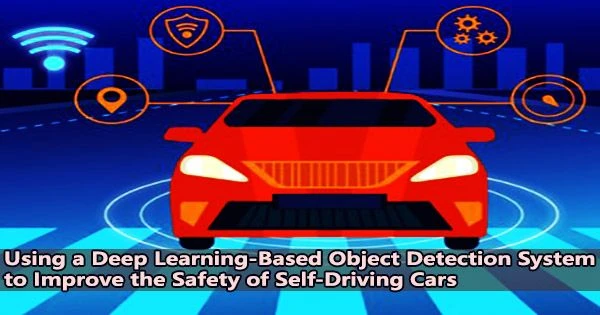Autonomous vehicles, often known as self-driving automobiles, have long been hailed as the transportation of the future. Many diverse technologies related to signal processing, image processing, artificial intelligence deep learning, edge computing, and IoT need to be developed in order to enable the autonomous navigation of such vehicles in various contexts.
The popularity of autonomous vehicles has raised many questions about their reliability and safety. An autonomous vehicle must precisely, effectively, and efficiently monitor and differentiate its surroundings as well as possible risks to passenger safety in order to guarantee a safe driving experience for the user.
Autonomous cars use cutting-edge sensors for this purpose, including Light Detection and Ranging (LiDaR), radar, and RGB cameras that provide a vast amount of data in the form of RGB images and 3D measurement points, or “point clouds.”
The identification of people and other vehicles depends on the timely and precise processing and interpretation of this collected data. This can be accomplished by incorporating cutting-edge computer techniques and the Internet of Things (IoT) into these vehicles, which enables quick, on-site data processing and more effective navigating across a variety of surroundings and challenges.
At present, autonomous driving is being performed through LiDAR-based image processing, but it is predicted that a general camera will replace the role of LiDAR in the future. As such, the technology used in autonomous vehicles is changing every moment, and we are at the forefront.
Professor Gwanggil Jeon
In a recent study published in the IEEE Transactions of Intelligent Transport Systems journal on 17 October 2022, a group of international researchers, led by Professor Gwanggil Jeon from Incheon National University, Korea have now developed a smart IoT-enabled end-to-end system for 3D object detection in real-time based on deep learning and specialized for autonomous driving situations.
“For autonomous vehicles, environment perception is critical to answer a core question, ‘What is around me?’ It is essential that an autonomous vehicle can effectively and accurately understand its surrounding conditions and environments in order to perform a responsive action,” explains Prof. Jeon. “We devised a detection model based on YOLOv3, a well-known identification algorithm. The model was first used for 2D object detection and then modified for 3D objects,” he elaborates.
The group used YOLOv3 to generate classification labels and bounding boxes with confidence scores using the RGB photos and point cloud data they had gathered. The Lyft dataset was then used to evaluate its performance. The early results revealed that YOLOv3 achieved an extremely high accuracy of detection (>96%) for both 2D and 3D objects, outperforming other state-of-the-art detection models.
The technique can be used in applications requiring object and obstacle recognition, tracking, and visual localization, such as autonomous vehicles, autonomous parking, autonomous deliveries, and future autonomous robots.
“At present, autonomous driving is being performed through LiDAR-based image processing, but it is predicted that a general camera will replace the role of LiDAR in the future. As such, the technology used in autonomous vehicles is changing every moment, and we are at the forefront,” highlights Prof. Jeon.
“Based on the development of element technologies, autonomous vehicles with improved safety should be available in the next 5-10 years,” he concludes optimistically.





